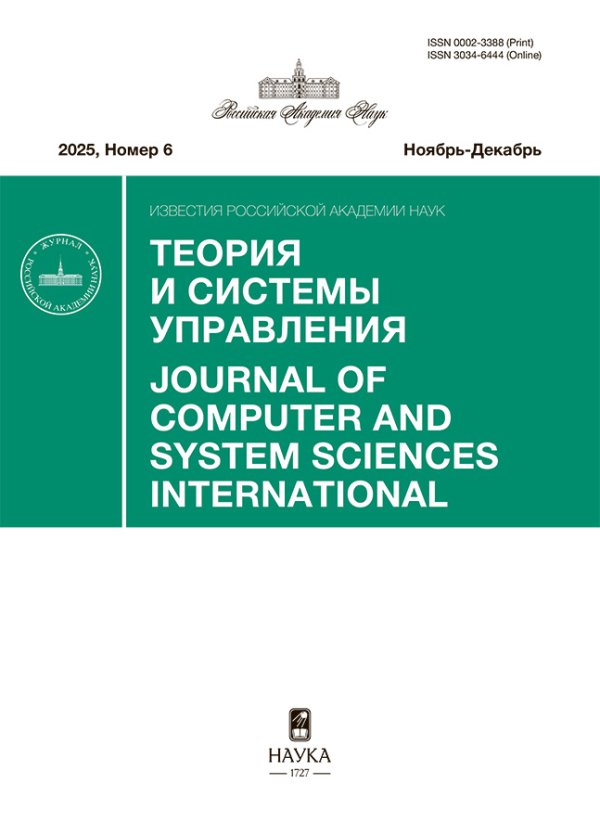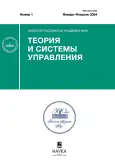Interpretability of learning in a signal processing system
- Authors: Dokukin A.A.1, Kuznetsova A.V.2, Okulov N.V.3, Sen’ko O.V.1, Chuchupal V.Y.1
-
Affiliations:
- FRC CSC RAS
- Emanuel Institute of Biochemical Physics of RAS
- “Pravilnoe pchelovodstvo”
- Issue: No 1 (2024)
- Pages: 107-121
- Section: COMPUTER METHODS
- URL: https://journals.rcsi.science/0002-3388/article/view/262531
- DOI: https://doi.org/10.31857/S0002338824010085
- EDN: https://elibrary.ru/ITJGID
- ID: 262531
Cite item
Full Text
Abstract
The paper presents a software package that allows one to generate algorithms for automatic classification of signals. The software package includes an algorithm that converts records of continuous signals into vector form, a set of machine learning methods, as well as data mining tools aimed at achieving transparency and interpretability of learning. The approach is based on the presentation of differences between compared classes as a set of relatively simple, statistically significant and interpretable effects, which are graphically represented on two-dimensional diagrams. The performance of the method is illustrated on the problem of assessing the state of the hive by sound signals. The software package can be used in solving applied problems of automatic diagnostics and data analysis.
About the authors
A. A. Dokukin
FRC CSC RAS
Author for correspondence.
Email: dalex@ccas.ru
Russian Federation, Moscow
A. V. Kuznetsova
Emanuel Institute of Biochemical Physics of RAS
Email: azforus@yandex.ru
Russian Federation, Moscow
N. V. Okulov
“Pravilnoe pchelovodstvo”
Email: stereoperm@yandex.ru
Russian Federation, Perm
O. V. Sen’ko
FRC CSC RAS
Email: senkoov@mail.ru
Russian Federation, Moscow
V. Ya. Chuchupal
FRC CSC RAS
Email: v.chuchupal@vail.ru
Russian Federation, Moscow
References
- Glorot X., Bordes A., Bengio Y. Deep Sparse Rectifier Neural Networks // Proc. Fourteenth Intern. Conf. on Artificial Intelligence and Statistics ({AISTATS} 2011). Fort Lauderdale, USA, 2011. V. 15. P. 315—323.
- Krizhevsky A., Sutskever I., Hinton G. E. Imagenet Classification with Deep Convolutional Neural Networks // Advances in Neural Information Processing Systems. 2012. No. 1. P. 1097—1105.
- Hastie T., Tibshirani R., Friedman J. Chapter 15. Random Forests. The Elements of Sta-tistical Learning: Data Mining, Inference, and Prediction. 2nd ed. Springer-Verlag, 2009.
- Cortes C., Vapnik V. Support-vector Networks // Machine Learning. 1995. V. 20. No. 3. P. 273—297.
- Breiman L. Random Forests // Machine Learning. 2001. V. 45. No. 1. P. 5—32.
- Freund Y., Schapire R. A Decision-Theoretic Generalization of On-Line Learning and an Application to Boosting // J. Computer and System Sciences. 1997. No. 55. P. 119—139.
- Schapire R. E., Freund Y. Boosting: Foundations and Algorithms. Cambridge, Massachusetts, London: MIT Press, 2012.
- Friedman J. Greedy Function Approximation: A Gradient Boosting Machine // The Annals of Statistics. 2001. V. 29. No. 5. P. 1189—1232.
- Журавлев Ю. И., Рязанов В. В., Сенько О. В. “Распознавание”. Математические методы. Программная система. Практические применения. М.: Фазис, 2006.
- Davis S., Mermelstein P. Comparison of Parametric Representations for Monosyllabic Word Recognition in Continuously Spoken Sentences // IEEE Transactions on Acoustics, Speech and Signal Processing. 1980. V. 28. No. 4. P. 357—366.
- Haibe-Kains B., Adam G. A., Hosny A. et al. Transparency and Reproducibility in Artificial Intelligence // Nature. 2020. No. 586. E14—E16.
- Kuznetsova A. V., Kostomarova I. V., Senko O. V. Modification of the Method of Optimal Valid Partitioning for Comparison of Patterns Related to the Occurrence of Ischemic Stroke in Two Groups of Patients // Pattern Recognition and Image Analysis. 2014. V. 24. textnumero 1. P. 114—123.
- Senko O. V., Kuznetsova A. V., Matveev I. A., Litvinchev I. S. Chapter 8 — Search of Regularities in Data: Optimality, Validity, and Interpretability. Eds P. Vasant, J. Thomas, E. Munapo, G.-W. Weber Advances of Artificial Intelligence in a Green Energy Environment. Amsterdam: Acad. Press, 2022. P. 151—171.
- Good P. Permutation, Parametric and Bootstrap Tests of Hypotheses, 3rd Ed. N. Y.: Springer-Verlag, 2005.
- Pesarin F., Salmaso L. Permutation Tests for Complex Data: Theory, Applications and Software. Hoboken: John Wiley and Sons, Ltd 2010.
- Kim H. J., Fay M. P., Feuer E. J., Midthune D. N. Permutation Tests for Jointpoint Regression with Applications to Cancer Rates // Stat Med. 2000. No. 19. P. 335—351.
- Akaike H. A New Look at the Statistical Model Identification // IEEE Transactions on Automatic Control. 1974. V. 19. No. 6. P. 716—723.
- Schwarz G. Estimating the Dimension of a Model // Annals of Statistics. 1978. V. 6. P. 461—464.
- Rissanen J. Modeling by Shortest Data Description // Automatica. 1978. V. 14. No. 5. P. 465—658.
- Senko O. V., Dzyba D. S., Pigarova E., Rozhinskaya L. Ya., Kuznetsova A. V. A Method for Evaluating Validity of Piecewise-linear Models // Intern. Conf. on Knowledge Discovery and Information Retrieval (KDIR-2014). Rome, 2014. P. 437—443.
- Domingos P. The Role of Occam’s Razor in Knowledge Discovery // Data Mining and Knowledge Discovery. 1999. V. 3. No. 4. P. 409—425.
- Доровских И. В., Сенько О. В., Чучупал В. Я., Докукин А. А., Кузнецова А. В. Исследование возможности диагностики деменции по сигналам ЭЭГ с помощью методов машинного обучения // Мат. биология и биоинформатика. 2019. Т. 14. № 2. С. 543—553.
- Еськов Е. К., Тобоев В. А. Изменение структуры звуков, генерируемых пчелиными семьями в процессе социотомии // Зоол. журн. 2011. Т. 90. № 2. С. 192—198.
- Еськов Е. К. Генерация, восприятие и использование акустических и электрических полей в коммуникациях медоносной пчелы // Биофизика. 2013. Т. 58. № 6. C. 1051—1064.
- Дрейзин В. Э., Рыбочкин А. Ф., Захаров И. С. Акустический контроль пчелиных семей с помощью вычислительной техники // Пчеловодство. 2000. № 4. С. 25—27.
Supplementary files










